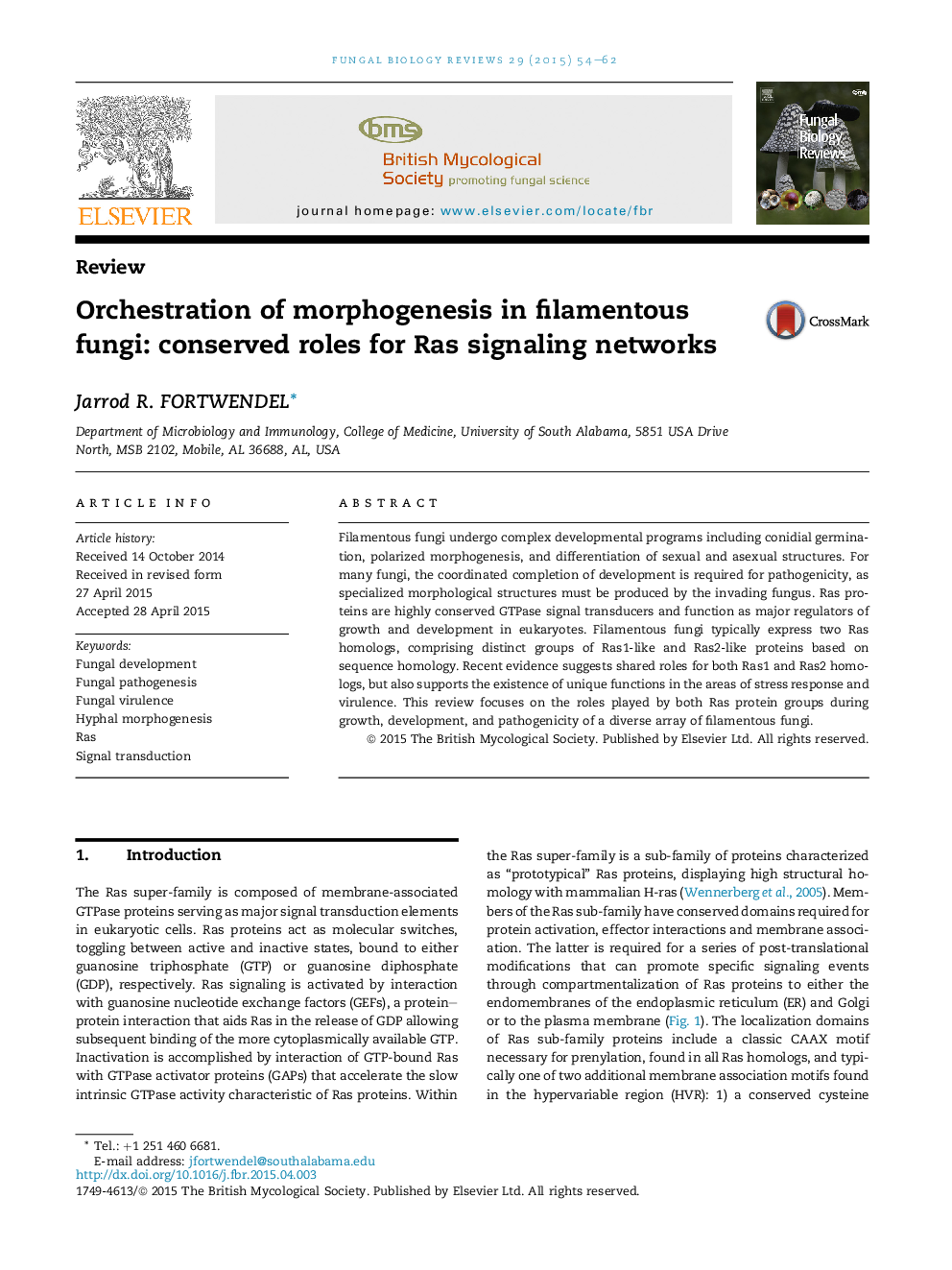| Article ID | Journal | Published Year | Pages | File Type |
|---|---|---|---|---|
| 2180455 | Fungal Biology Reviews | 2015 | 9 Pages |
Filamentous fungi undergo complex developmental programs including conidial germination, polarized morphogenesis, and differentiation of sexual and asexual structures. For many fungi, the coordinated completion of development is required for pathogenicity, as specialized morphological structures must be produced by the invading fungus. Ras proteins are highly conserved GTPase signal transducers and function as major regulators of growth and development in eukaryotes. Filamentous fungi typically express two Ras homologs, comprising distinct groups of Ras1-like and Ras2-like proteins based on sequence homology. Recent evidence suggests shared roles for both Ras1 and Ras2 homologs, but also supports the existence of unique functions in the areas of stress response and virulence. This review focuses on the roles played by both Ras protein groups during growth, development, and pathogenicity of a diverse array of filamentous fungi.
